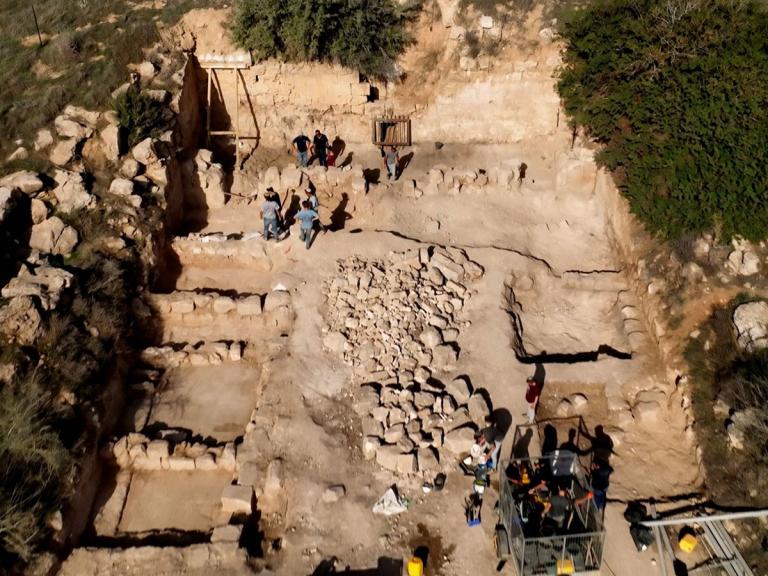
Archaeologists from the Israel Antiquities Authority revealed (IAA) have uncovered a site claimed to be the site of “Jesus’s midwife” and found hundreds of artifacts and lamps from the site in the Lachish region of Israel. The lamps are thought to be from the 8th or 9th century. In a Facebook post, Nir Shimshon-Paran and Zvi Firer, excavation directors in the Israel Antiquities Authority Southern Region, released a joint statement saying, “In the shop, we found hundreds of complete and broken lamps dating from the 8th–9th centuries [A.D]. The lamps may have served to light up the cave or as part of the religious ceremonies, similarly to candles distributed today at the graves of righteous figures and in churches.” Known as the “Salome Cave,” the site is part of the IAA’s excavations along the Judean Kings Trail, a government-led project that brings together 60 miles of archaeological sites.
The site is given significance due to its association with the apocryphal Gospel of James, which is attributed to James, the brother of Jesus who wrote the Book of James found in the New Testament. The book’s authenticity is highly doubted, which is why it falls outside the Biblical canon and was condemned by Pope Innocent I in 405 AD.
The gospel is one of the earliest sources of the “perpetual virginity” of Mary, claiming that Mary remained a virgin throughout her life, thus making James Joseph’s son from a previous marriage rather than the half-brother of Jesus through Joseph’s and Mary’s union.
According to the text, Joseph seeks a midwife in Bethlehem while Mary goes into labor in a cave. After the midwife delivers Jesus, she is amazed to find that Mary is a virgin and goes and finds a woman named Salome, another midwife, to tell her what she has seen. Salome refuses to believe it and checks Mary herself. Her hand is injured due to her unbelief, and an angel of the Lord appears to tell her to hold baby Jesus to heal her hand. She does so and praises God after she is healed. A woman named Salome does appear in the Bible. However, she is the mother of Jesus’s disciples, John and James, and is never referred to as being a midwife. The name Salome or Shlomit, according to IAA archaeologist Zvi Firer was prevalent during the Second Temple period.
The apocryphal story was known to early Christians, and the burial cave was recognized as the burial place of Salome during the Byzantine era. The cave was discovered by antiquities looters in 1982 and later excavated in 1984 by Professor Amos Kloner of the IAA. It has not been open to the public during that time. However, Saar Ganor, director of the IAA, stated, “Once the restoration and development works are completed, the forecourt and the cave will be opened to the public.” There is no date yet for when the public will have access to certain parts of the site.


